
|
Olympus Pen E Cameras
|

|
My other articles related to the |
|
This is intended to be a brief compendium of basic facts about Olympus Pen E cameras. First, a table, in chronological order, showing the three Pen E lines together:
Table abbreviations: T/S = Tilt/Swivel, F = Internal Flash. |
| Model | Year | Imager | Screen | F | Physical | Batt | Rem | ||||||
|---|---|---|---|---|---|---|---|---|---|---|---|---|---|
| MP | ISO | Size | Dots | T/S | W | H | D | Wgt | |||||
| E-P1 | 2009 | 12 | 6400 | 3" | 230k | - | - | 120.5 | 70 | 35 | 381 | BLS-1 | |
| E-P2 | 2009 | 12 | 6400 | 3" | 230k | - | - | 120.5 | 70 | 35 | 381 | BLS-1 | |
| E-PL1 | 2010 | 12 | 3200 | 2.7" | 230k | - | F | 115 | 72 | 42 | 334 | BLS-1 | |
| E-PL2 | 2011 | 12 | 6400 | 3" | 460k | - | F | 115.4 | 72.7 | 42 | 362 | BLS-5 | |
| E-P3 | 2011 | 12 | 12800 | 3" | 614k | - | F | 122 | 69 | 34 | 369 | BLS-5 | |
| E-PL3 | 12 | 12800 | 3" | 460k | T | - | 110 | 64 | 37 | 313 | BLS-5 | ||
| E-PM1 | 12 | 12800 | 3" | 460k | - | - | 110 | 64 | 34 | 265 | BLS-5 | ||
| E-PL5 | 2012 | 16 | 25600 | 3" | 460k | T | - | 111 | 64 | 38 | 325 | BLS-5 | |
| E-PM2 | 16 | 25600 | 3" | 460k | - | - | 110 | 64 | 34 | 269 | BLS-5 | ||
| E-PL6 | 2013 | 16 | 25600 | 3" | 460k | T | - | 111 | 64 | 38 | 325 | BLS-5 | |
| E-P5 | 2013 | 16 | 25600 | 3" | 1037k | T | F | 122 | 69 | 37 | 420 | BLN-1 | |
| E-PL7 | 2014 | 16 | 25600 | 3" | 1037k | T | - | 115 | 67 | 38 | 357 | BLS-50 | |
| E-PL8 | 2016 | 16 | 25600 | 3" | 1037k | T | - | 115 | 67 | 38 | 357 | BLS-50 | |
| E-PL9 | 2018 | 16 | 25600 | 3" | 1037k | T | F | 117 | 68 | 39 | 380 | BLS-50 | |
| E-PL10 | 2019 | 16 | 25600 | 3" | 1037k | T | F | 117 | 68 | 39 | 380 | BLS-50 | |
| PEN-F | 2016 | 20 | 25600 | 3" | 1037k | TS | - | 124.8 | 72.1 | 37.3 | 427 | BLN-1 | |
|
E-P — the original, premium Pen Line The year is 2009. The Four Thirds Olympus E-Series of SLRs seems to be in full swing, with three models released that year, in three different market segments: the E-30, E-620, and E-450. We don't know yet, what is going to hit the fan. The previous year Olympus and Panasonic announced the new Micro Four Thirds (μFT) mount-and-sensor standard (with Olympus presumably being the driving force behind it), a foundation for the first system of non-SLR, interchangeable-lens cameras. I'm dismissing here some one-of-a-kind offerings by Leica: the M8 (APS-H, 1.3×, 2006, followed by M8.2 in 2008), and Digilux 3 (4/3, 2006). While mirror-less, both were using existing standards, developed specifically for SLRs. The μFT standard can be summarized in just two points:
This combination was promising a significant, if not dramatic, reduction in camera size and weight, which, of course, remained to be seen. Getting rid of the mirror, however, would offer a number of other benefits, both in cost effectiveness and in technical capabilities. Surprisingly, not a model by Olympus, but the Lumix DMC-G1 from Panasonic was the first μFT camera on the market. Very capable, well-built, with the best eye-level EVF available at that time and SLR-like form factor. A strong entry, available in early 2009.
| 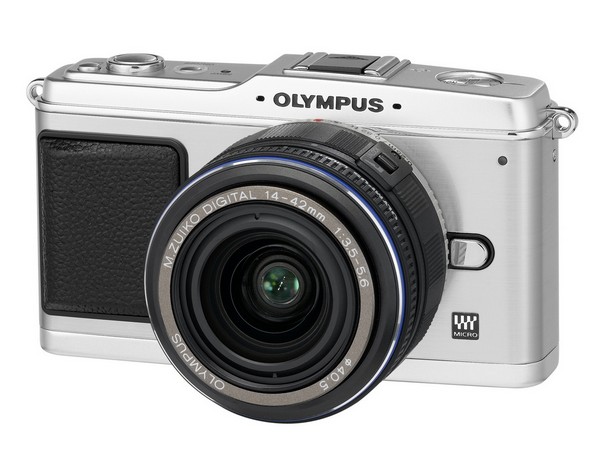
E-P1, 2009
The first Olympus entry into Micro Four Thirds, the | As much a precision instrument as a piece of art, with a retro design remindful of the original Pens of 1970's: a well-crafted metal body, just 121 mm across, and weighing about a pound (452 g) with battery and 17 mm lens. On the other hand, most of the internals were taken from Olympus SLRs (E-620): in-body image stabilization, great engine, focal-plane shutter, anti-dust system, you name it. All this on a compact. There was a glaring omission, however: no eye-level viewfinder. For many, a deal-breaker: using the monitor outdoors is often impossible. Not difficult, not frustrating — just impossible. While Olympus was offering a clip-on optical finder, it was only for a single focal length (17 mm); no etched frames or zooming. Personally, I decided to wait this one out. See also my more detailed E-P1 write-up.
| 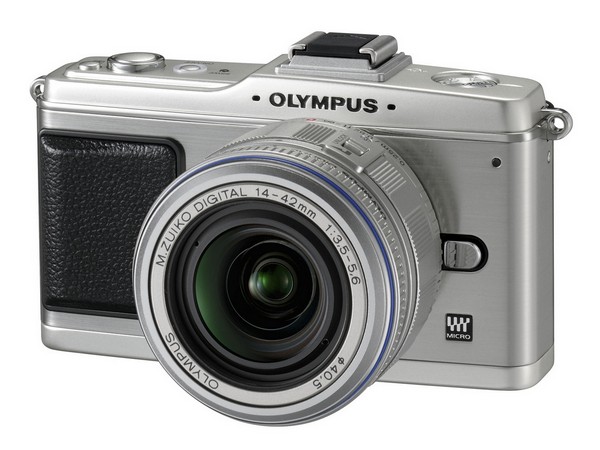
E-P2, 2009
| In spite of the mixed reception, Olympus succeeded in changing the market: the camera was selling quite well (in spite of the $800 kit price), and in Japan it became a hit. Still, within five months Olympus followed with an update: the E-P2. For many, myself included, the E-P2 was "E-P1 done right". The only major change was a new accessory port underneath the hot shoe. It was used for an eye-level electronic viewfinder. The finder, VF-2, had the same 600×800 pixel resolution (1.44M dots) as finders used by Panasonic. but it was based on a display unit developed by Epson and released only after the E-P1. With the 0.58× (effective) magnification the view matched that in the E-3, being larger than in most Four Thirds or APS-C SLRs. This way the Pen became a fully useful camera, capable of taking on the SLR competition. Now the problem was with μFT lenses — Olympus had only two: the 14-42/3.5-5.6 zoom and the 17/2.8 "Pancake", so partnership with Panasonic was vital. But that's another story.
| 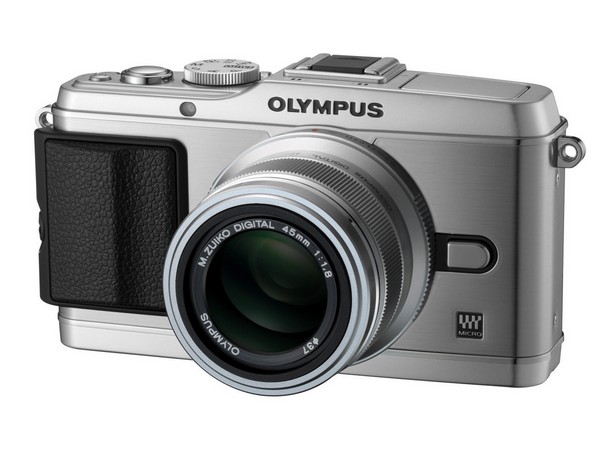
E-P3, 2011
| It took Olympus a year and a half to come up with the next E-P camera. In the meantime they were working on the lower segment of the market (the E-PL models, see below). The E-P3 shows a number of changes. While the size and weight remain almost the same, the styling differs (I preferred the old one). A pop-up flash has been added, also an AF-assist lamp and a removable hand grip. Most importantly, the monitor resolution has increased by 63% (linear). The controls have been re-worked. More buttons in the back, some re-assignable. Oh, and a touch screen option. The biggest internal change was the (claimed) improved AF. The E-P3 doubles the high ISO setting of E-P2, but keeps the pixel count of 12 MP. This was the main reason of complaints on the Web. Those were largely unjustified: unless we use a really good lens, more does not really matter. Generally, I remember liking this camera (except for the buttons in the back), but somehow there was nothing special about it.
| 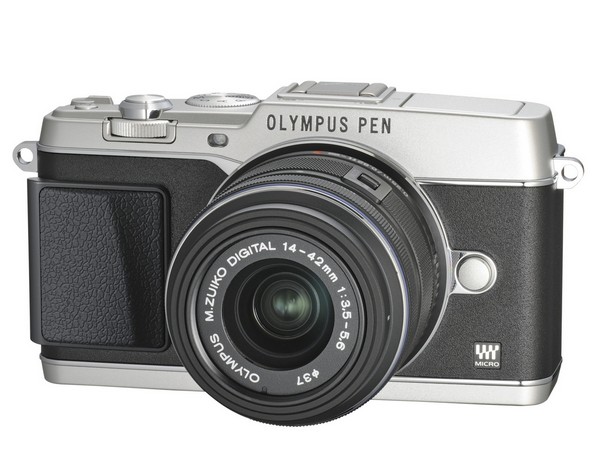
E-P5, 2013
| In 2013, the E-P5 became the top dog of the Pen family, replacing the E-P3 (there was no E-P4, as the number four is considered unlucky in Japan). The circumstances in which this camera was designed were, however, quite different than for the previous models in this line. Olympus no longer had all eggs in one basket: the E-M5 was met in 2012 with a wide acclaim, and the E-M1 was well under way as well (in stores December, 2013). Thus, Olympus did not have to put everything they had into this camera. They already had a model (soon: two) destined to be top-of-the-line, feature-wise. Still, for reasons unknown, they decided to do exactly that: throw everything in (except for eye-level viewfinder, of course), then add a kitchen sink. One feature, introduced only in the E-M1, did not make it here: the imager-based phase detection AF, with better (sometimes: any) performance with the 4/3 lenses, beyond the six which were designed to work with PD AF. Among features or specs improved in this model we can see a 16-MP sensor, higher serial rate, 5-axis IS, faster shutter speeds and lots more. I'm not even trying to make a full list. Physically, in width and height this camera exactly matches its predecessor; it is only in depth where it gains 3 mm. That's justified by a tilting monitor. It also gains 50 g in weight (it feels like more, really). But then, compare it against the E-M5 with the viewfinder hump chopped off; again, identical, except for the depth. The body weight is also almost the same (just 5 g more for the E-M5). What happened to the size/weight advantage of the Pen line? Another full rehash of controls, this time for the better: two full control dials, much improved button layout. And, new to Olympus cameras, a little gadget called the Fn Lever or 2×2 Lever, changing the semantics of dial actions. (Let me spare you my comments on that.) The monitor resolution increased again; this time to 1.04M dots. At the same time, the new add-on EVF, VF-4, raised the resolution to 2.4M dots (768×1024 pixels) and (equivalent) magnification to 1.48× — the specs of the upcoming E-M1.
| |
|
It is 2017 now, four years since the E-P5 release. The camera did not really age: the specs and performance remain relevant; as good as they were then. Still, In those four years Olympus did not update this model. Disagree with me if you wish, but I believe this is because of the Pen F of the last year. That camera, being just 4 mm wider and 3 mm taller than the E-P5, and weighing just 7 grams (1.7%) more, offers everything the E-P5 does (except for the flash), and adds a built-in viewfinder. It does not cost that much more, either. To make the next E-P a tempting choice, it would have to shrink quite a bit and become less expensive. But then it would become the next E-PL8 of the Pen Light line! That's a tough one. We'll see what Olympus does next. E-PL — the "Light" Pen for the rest of us Following the successful release of the E-P1, Olympus decided to capitalize on that, offering an "economy" version. That's how the "Pen Light" or E-PL, line was conceived. |
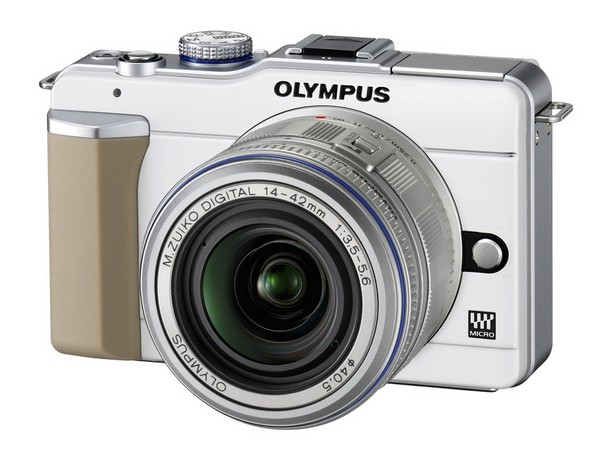
E-PL1, 2010 |
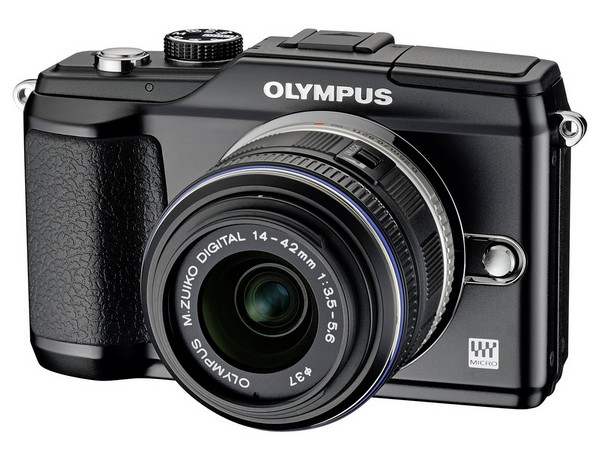
E-PL2, 2011 | |||||||||||||||||||||||||||||||
|
The E-PL1 was clearly a downgrade from the E-P2, and I don't mean just skipping the "luxury" stuff (like metal body), but also some basic specs.
Simplified controls (no dials!), smaller monitor, slower fast shutter, less efficient IS, lower top ISO — this is, roughly, the list of the other cost-cutting measures applied. On the other hand, a pop-up flash was squeezed in. Obviously, the camera would accept the VF-2 finder (or any that followed). Frankly, I was happy with the camera's performance and image quality. The controls are not so bad, either (you can always resort to the Control Panel, the best interface Olympus ever came up with). The camera just feels a bit cheap. |
Now, that's much better! The E-PL2 of a year later is an improvement, in many ways. Doubled top ISO and shutter speed, doubled monitor dot/pixel count, larger screen — and better controls, including a control dial. Not a real dial, mind it, just a fiddly ring around the arrow pad, but better than nothing.
The size remains unchanged, a bit narrower but taller the Surprisingly, a few small touches to body sculpting took care of its perceived cheapness; it looks an feels much better now. (The new look reminds me of the C-5060WZ from years ago.) All things considered, this was a nice and reasonable upgrade; it made the E-PL line a viable option. | |||||||||||||||||||||||||||||||
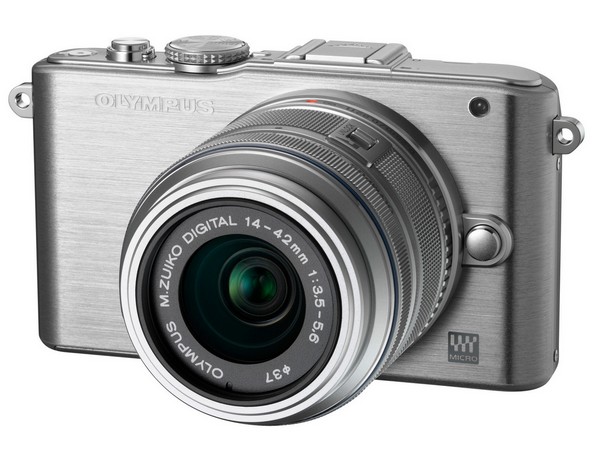
E-PL3, 2011 |
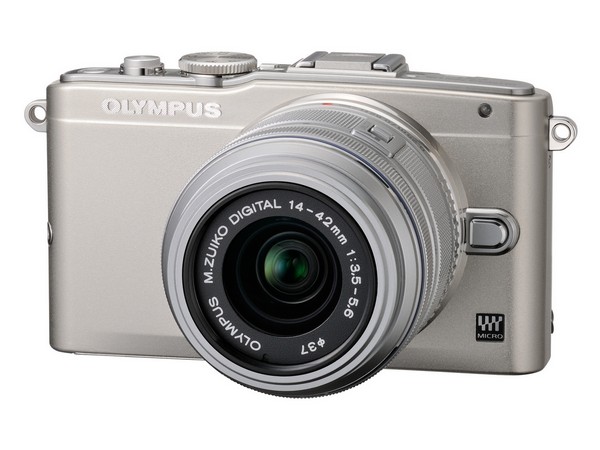
E-PL5, 2012 | |||||||||||||||||||||||||||||||
|
No family resemblance whatsoever. The E-PL3 in brushed metal looks like a work of art (in red: just gaudy). Six months after the E-PL2, Olympus decided to change everything.
The camera visibly shrunk. It is also smaller and lighter than the E-P3, introduced at the same time. It got a tilting monitor (good) of the 16:9 aspect ratio (bad). With still pictures, 25% of the area is wasted; it is no longer a 3" monitor. The arrow pad (with a control dial around) barely fits to the right of the monitor. Some buttons had to be moved above it. Then, no flash any longer. This I can understand. Internally, the camera is almost identical to the E-P3, no more dumbing down. The only thing I remember missing is the level gauge (very useful!). I have mixed feelings about this one. I love the styling, I like what it does and how, but I dislike the monitor and some of the controls. I still may buy one, though — even as a display item. |
With E-PL5, the Pen Lite line has been updated to some of the new technology developed for company's showcase, the E-M5. In particular, the new, 16-MP imager was brought over, providing ISO settings up to 25,600.
Unfortunately, the 16:9 monitor remains as it was, with all the consequences. The camera's size did not change since the E-PL3, just 10 grams have been added to the weight. There is also a small, detachable grip (not shown in this picture). | |||||||||||||||||||||||||||||||
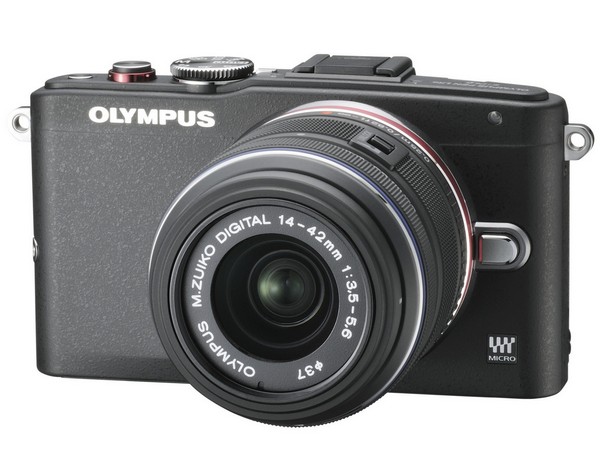
E-PL6, 2013 |
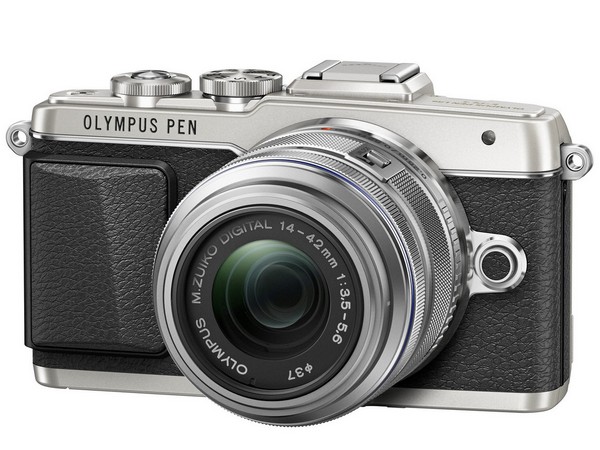
E-PL7, 2014 | |||||||||||||||||||||||||||||||
|
E-PL6 was a rather minor update to the E-PL5.
Modifications included addition of "extended" ISO 100, faster shutter release, time-lapse shooting, level gauge, and support for the new VF-4 finder. Originally it was intended only for the Asian markets, but in 2014 Olympus started selling it, I believe, worldwide. |
E-PL7 is a new camera. The body is slightly bigger and heavier, the grip is no longer detachable.
The tilting monitor gains more resolution and goes back to the 2:3 ratio. The exiled buttons return home; we also get a real control dial, surrounding the shutter release. AF uses now 81 spots (used to be 35), and manual focusing can be assisted by image peaking. The camera has Wi-Fi capability and can be remotely controlled by the Android OI Share application. | |||||||||||||||||||||||||||||||
|
The E-PL7 also got a new, re-designed shutter. This was probably to address the problem of camera shake, reported for some Pens at shutter speeds between 1/100 and 1/300 s and in some, more or less specific, circumstances.
The only visible indication of that is a lower flash synchronization speed: 1/250 s instead of the previous value of 1/320s. As this is directly related to the shutter curtain travel time (or speed), that speed was reduced to 250/320 (or 78.1%) of the original, therefore the energy which somehow has to be dissipated as camera vibrations after the curtain gains full speed and, again, after it stops, is reduced as a square of that fraction: to 61% of that of the old shutter. That seems like a significant change, and it could have been further helped by other improvements, like reducing the curtain mass or, somehow, affecting the vibration amplitude-versus-time profile. Well, slowing down the curtain travel is certainly the simplest and most dependable way.
|
| 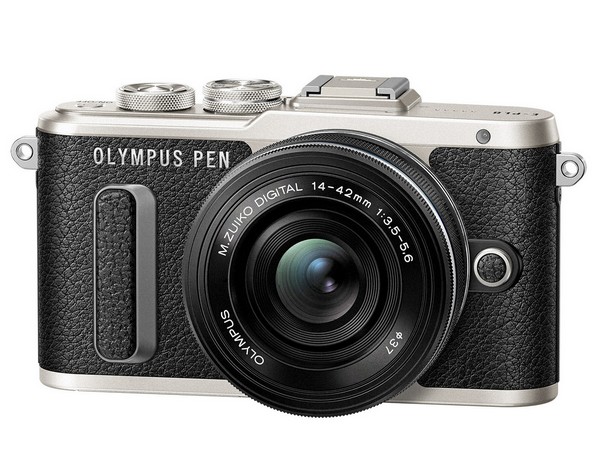
E-PL8, 2016
| 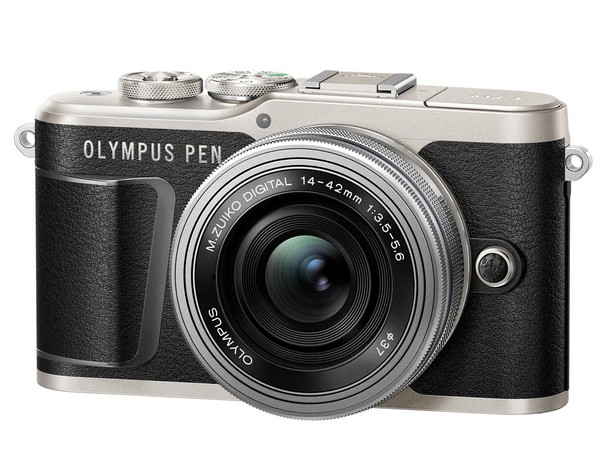
E-PL9, 2018
This is the E-PL8 of 2016, the most recent Pen Lite as of original posting of this compilation.
| The features, specifications, and the aspects of camera's behavior which I was able to check, seem identical to those on the E-PL7. All this indicates that the changes are only (or, at least, mostly) of cosmetic nature. The new styling is a quite radical departure from that used in previous models. That was hinting at the Seventies; the new one moves us back another forty years or so — all the way back to early Leica or its Russian clones.
The E-PL9 of March, 2018 seems to be an incremental upgrade to the two previous models: some tweaks and improvements, but nothing to write back home about, and one crippling flaw.
| Same 16 MP sensor (fine with me) and three-axis IS; updated image engine and user interface; restored pop-up flash, missing since the E-PL3 in 2011. Addition of Bluetooth and 4k video — not enough to make me excited. The camera grew by 1 or 2 mm in each dimension and gained about 1 oz (more exactly: 23 g) in weight. This may not be much, but I would like to see this trend reversed (see here). This may be the best-looking E-PL yet: a hybrid of the retro E-PL8 and classic E-PL7. It is, however, crippled by removal of the accessory port (the one just below the hot shoe), so the camera cannot use an add-on EVF.
|
We are back to square one, back to 2009. For daytime outdoors shooting, an electronic, eye-level viewfinder is a must. (The same port could be used for an external microphone, gone.)
One can argue that removing the port allows for a smaller body. This seems not to be the case here, see the pictures below. The body height was not reduced; actually, it increased from 67 mm (E-PL7, E-PL8) to 68 mm.
|
| 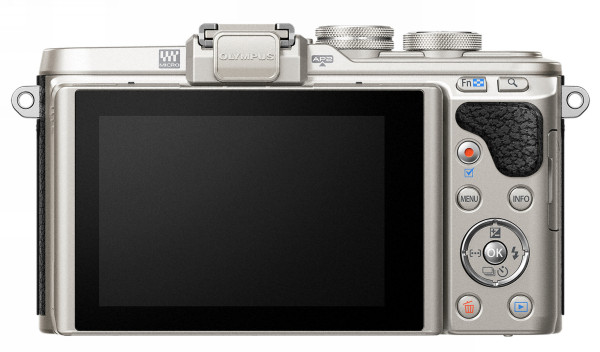
E-PL8, rear view
| 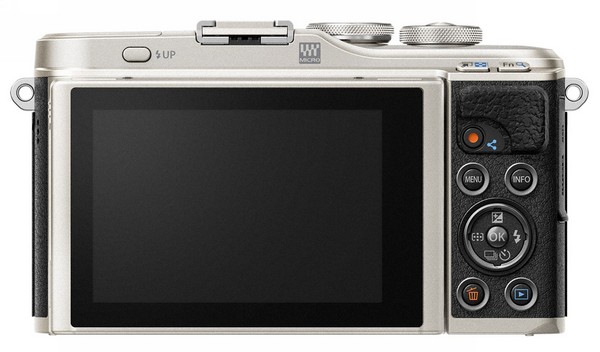
E-PL9, rear view
|
I think this was a step in a wrong direction. While I could accept a finder-less body (to be used as a last-resort backup) at $300, I wouldn't at $600 (the Amazon US price, December, 2018).
Still, Olympus' own market research is not limited to the enthusiast/amateur group. Maybe they are targeting a different group of potential buyers, people who don't care about EVFs. I doubt this, however: why would the same group care about interchangeable lenses, and what do we gain by dropping the port (in terms of production cost or market appeal).
|
| 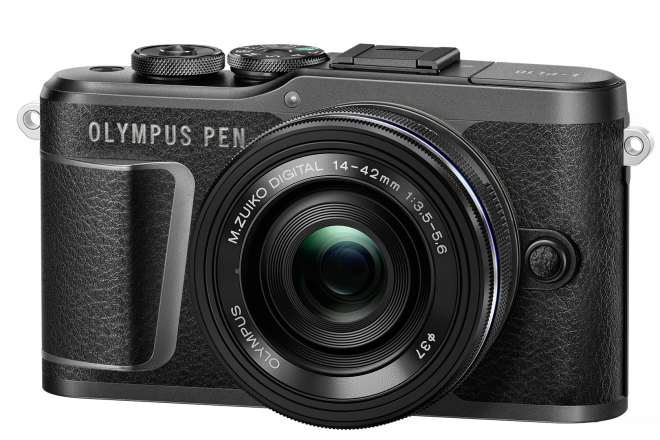
| 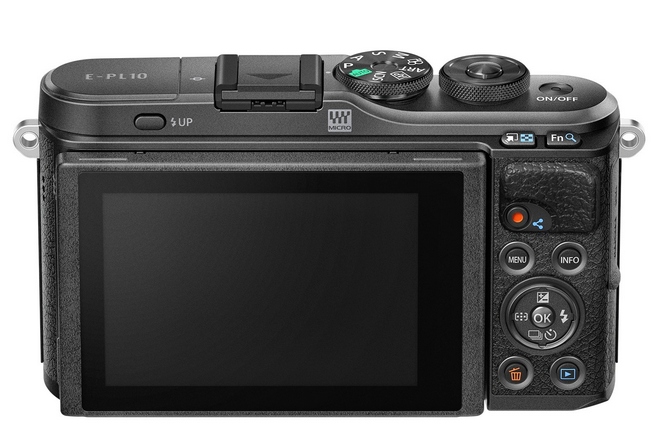
|
| The E-PL10, 2019 — just a new model name?
If E-PL9 was a minor update, the E-PL10 of late 2019 remains virtually unchanged. Putting aside the new body colors (all-black, brown, white) both are externally identical.
| Internally, the only new feature seems to be an option to adjust the magnitude of (most) Art Filter effects. I'd prefer to add these, if any, in postprocessing, so this is not of any real advantage. Sorry. Olympus also says the new model uses Version VIII of their TruPic engine, but tnis does not really mean anything. For a number of obvious reasons, this cannot be TruePic VIII used in E-M1 Mk.II.
| 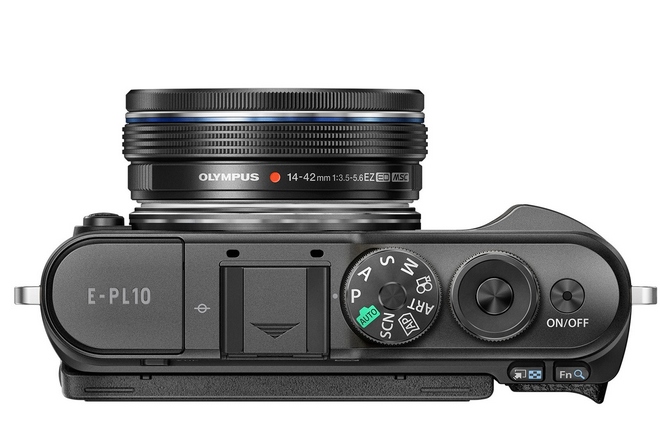
|
Thus, this latest PL does not bring anything new to the table. Still, the technology it uses remains competitive, build quality well above average, and design — just beautiful. Yes, it is missn an EVF; yes, it's a bit overpriced. but still...
| ||||||||||||||
|
Pen F — the one and only While this camera is not a part of the Pen E family, it is important in that context, as it competes (directly or almost so) with the family members.
And what a worthy competitor it is: for me, the most enjoyable of all Olympus μFT cameras. Not the most capable, mind it (this title goes to the | ||
|
This is the first Olympus camera with a 20-MP sensor (but not the kind with phase-detection AF). It also has an eye-level finder with 2.4 million dots (effective magnification of 0.62×, compared to 0.74× in the E-M1 II or E-M5 II and in the add-on VF-4). The serial rate of 5 FPS (with continuous AF) or 10 FPS (without) is more than enough for most uses, and the 5-axis image stabilization seems as effective as that in the latest OM-D models. Importantly, the camera includes the ingenious High-Res mode, delivering images of 50 or 80 MP in resolution; with a good lens, a tripod, and a static subject, this is capable of some stunningly detailed images. The Pen F body is very pretty and well-made, up to the standards of the E-P line, partly aluminum, partly magnesium alloy. Defying the size limitations, it has quite a few external controls, including a separate dial for exposure compensation (which I consider a most important control on a camera). |
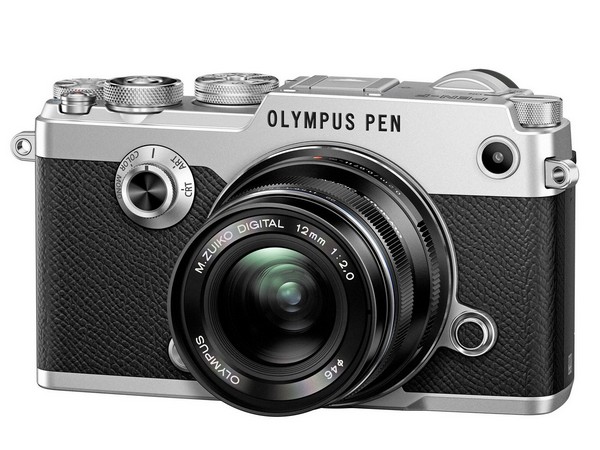
PEN-F, 2016 | |
|
Basically, what Olympus did was to take the top-of-the line E-Series Pen (E-P5), add the built-in EVF and some other features from the OM-D family, and create a camera competing with both branches. All of this at a very moderate expense in terms of size and weight. Impressive.
Between 2009 and 2016, Olympus released 13 Pen E cameras divided between three lines. I believe it was related, in past at least, to probing the market and reacting to it, in the meantime trying to establish mirror-less system cameras as a legitimate breed. After that, everybody and his mama (Sony, Fujifilm, Nikon, even Canon!) started making those, the gold-rush feeling was over; the market begun to settle down. There were no new Pen E models in 2017. Then in March of 2018 we saw the sole new Pen: the E-PL9, pretty but missing the accessory EVF option. Is there enough room for three distinct lines of Pen E models? I don't think so. With OM-D and Pen F competing, I think there is enough space left for at most one line of finder-less μFT cameras. To carve itself a market niche, this line must offer something Pen F doesn't and there seem to be two possible directions here:
Which one, if any, of these two directions will Olympus follow, we will know soon, perhaps within a year. Unless they choose to surprise us again. Update of December, 2018 With the E-PL9 release, Olympus is showing their interest in keeping the finder-less Pen family alive, if (probably) just the E-PL branch of it, and choosing the second one of the two development options described above: the "Fashionista" path, as opposed to the "Mini" one. This may work on some of the Far East markets (notably: Japan), but I'm not sure about the rest of the world. Personally, I would have preferred to see a small but capable mini-Pen, complementing the Pen F rather than competing with it, at the same time being a viable second-body option for users of OM-D cameras (or μFT ones by Panasonic). Update of January, 2020 Looks like Olympus, indeed, chose the Fashionista path this time, and a rather feeble one at that. Tough. I just hope they will keep the Pen F line afloat. | ||

|
My other articles related to the |
| This page is not sponsored or endorsed by Olympus (or anyone else) and presents solely the views of the author. |
| Home: wrotniak.net | Search this site | Change font size |
| Posted 2017/06/28, last updated 2018/01/12 | Copyright © 2017-2018 by J. Andrzej Wrotniak |